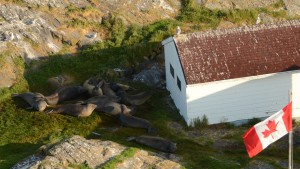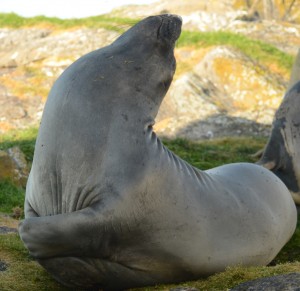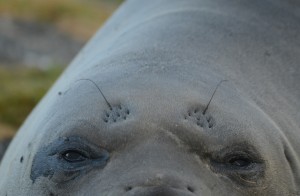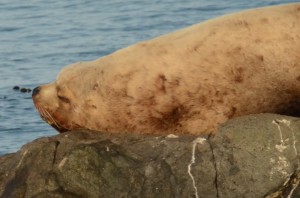May 3
The weather today was very similar to yesterday’s, with a flip flop breeze most of the day, finally becoming a 15- 20 knot westerly as dusk approached. Temperatures were a little warmer, 14o C and solar radiation levels about the same. The barometer is still dropping and the short-term forecast looks like more of the same with raining arriving Tuesday.
Two whale watching boats were observed in the Ecological Reserve this morning and a dive charter vessel supported divers in the ER.
Eagles continue to hunt in the ER as does a lone raven that visits daily and drives the oystercatchers mad.
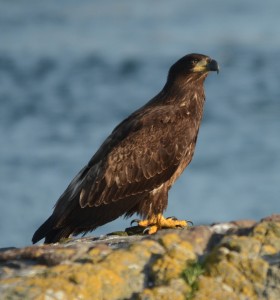
Bald Eagles have been observed catching fish and chasing Canada Geese and Glaucous-winged Gulls in the last few weeks. As long as the wind is not too strong, they are here daily.
There were 15 elephant seals on Great Race this morning and most of the day. Their moult continues.
The southwest corner of Great Race is becoming an old age home for male sea lions and there were five hauled out there all day.
The Sea Thrift is blooming.
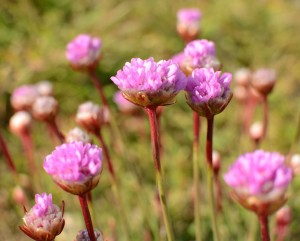
Sea Thirft, Armeria maritima subspecies maritima is an introduced species. I ‘m not sure which sub-species this is, native or european.
I spent a bit of time in the inter-tidal today and soon discovered that the memory cards in the camera were full so I spent a lot more time culling and sorting photographs indoors.
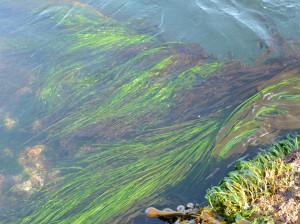
Phylospadix scouleri, also known as surf grass is found in the low tide zone and the top of the sub-tidal. Here it is mixed with Desmarestia aculeata and bull kelp Nereocystis lutkeaena both subtidal species.
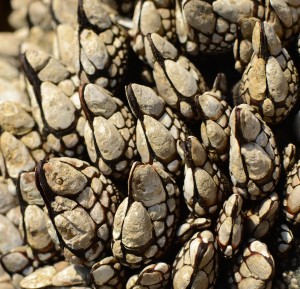
Many of the species found in the inter-tidal at Race Rocks are more usually associated with outer coast, more wave exposed sites. The current here makes it a very rich hotspot for marine biodiversity.
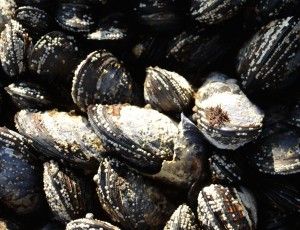
Competition for space and creation of more habitat go hand in hand. Notice set of tiny barnacles on the California Mussels and a spot of Endocladia muricata which is what larval Mytilus californianus likes to settle out on.
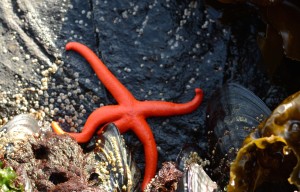
A Henry Star also known as the Blood Star or Henrycia spp.. It will need to find shade to conserve water so that it can breath through its skin.
There were no visitors and chores were routine.

